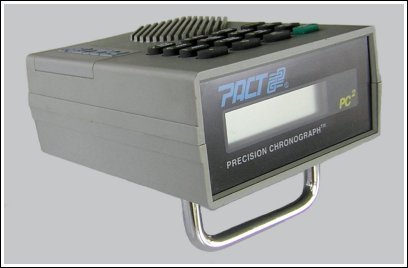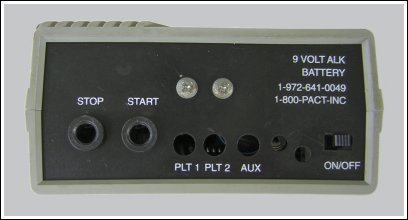Chronograph
(without the problems)
A good Chronograph will supply you with accurate
information that can help you make much better handloads. There
are a million reasons why you can't always rely on the information
printed in charts and manuals. If you haven't used a chronograph
before, you're in for a few surprises. I've used this particular
PACT chronograph for almost ten years. It's a good unit, but
I've found a few of things you can do to improve this chronograph and
others.

My chronograph doesn't lay flat like other units.
Chronographs are very delicate instruments that can be extremely frustrating to use. The trick is to understand how to stack the odds in your favor, so that you don't get "ticked off" when using one. I've found that chronographs use up batteries faster than most shooters would believe. That accounts for most of the problems.

Notice the two small screws on the plastic back panel.
I added them for making quick and easy battery checks.
I also added two "extra" wires from the units 9 volt
battery to those screws inside on the back panel. This allows me
to take quick voltage readings using a digital meter without having to
open the unit all the time. It's also important to conserve your
battery, and always turn the unit off immediately after getting your
information. When I go to the range for the whole day, I usually
go through at least two new batteries. Never store your
chronograph with the battery connected.
There's more to this story . . . .

